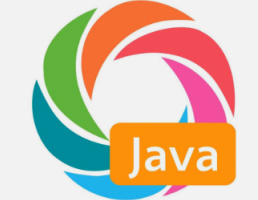最近我这边有一个需求就是需要把Bean中的某一些特殊字段的值进行替换。而这个替换过程是需要依赖一个第三方的dubbo服务的。为了使得这个转换功能更加的通用,我们采用了下面的方式:
- client端使用自定义的注解(假设为
@Dimension)标记Bean中所有的「特殊字段」 - client端把bean转换为json格式,但是这个转换过程的要求是:这些特殊的字段对应的json的key需要符合一定的格式,而这个格式依赖于标记的
@Dimension注解 - 然后client端通过dubbo RPC服务把json扔给server端,server进行一些json解析,替换之后把替换之后的json扔给client端,然后client端把接收到的json再转回为之前的Bean对象的实例。
我们先来看看把bean转为json,一般没有特殊要求的话,我们都是:
/**
* Object可以是POJO,也可以是Collection或数组。
* 如果对象为Null, 返回"null".
* 如果集合为空集合, 返回"[]".
*
* @param object the object to json
* @return toJson result
*/
public String toJson(Object object) {
try {
return mapper.writeValueAsString(object);
} catch (IOException e) {
LOGGER.error("write to json string error:" + object, e);
return null;
}
}
这种是默认的情况,生成的json的key和对应的Bean的filed的name是一模一样的。
而Jackson也给我们提供了注解:@JsonProperty注解来帮助我们重命名生成的json的key。但是他这个重命名并不是很灵活,因为他只能固定的重命名为某一个「确定的」值,而不能容许我们做一些额外的操作。
所以在这种情况下,我打算自定义一个注解,因为业务场景相关,我们的注解定义如下:
@Documented
@Retention(RetentionPolicy.RUNTIME)
@Target(ElementType.FIELD)
public @interface Dimension {
String valueType();
}
假设我们的json的key的生成规则如下:
- valueType()的值为“id”时,json key追加后缀“_id”
- valueType()的值为”code”时,json key追加后缀“_code”
这个时候我们就可以使用Jackson提供给我们强大的JacksonAnnotationIntrospector类了。
import com.google.common.base.Preconditions;
import org.codehaus.jackson.Version;
import org.codehaus.jackson.Versioned;
import org.codehaus.jackson.map.introspect.AnnotatedField;
import org.codehaus.jackson.map.introspect.JacksonAnnotationIntrospector;
import org.codehaus.jackson.util.VersionUtil;
import java.lang.annotation.Annotation;
import static com.google.common.base.Strings.isNullOrEmpty;
/**
* @author rollenholt
*/
public class DimensionFieldSerializer extends JacksonAnnotationIntrospector implements Versioned {
@Override
public Version version() {
return VersionUtil.versionFor(getClass());
}
@Override
public boolean isHandled(Annotation ann) {
Class<?> cls = ann.annotationType();
if (Dimension.class == cls) {
return true;
}
return super.isHandled(ann);
}
@Override
public String findSerializablePropertyName(AnnotatedField af) {
return getPropertyName(af);
}
@Override
public String findDeserializablePropertyName(AnnotatedField af) {
return getPropertyName(af);
}
private String getPropertyName(AnnotatedField af) {
Dimension annotation = af.getAnnotation(Dimension.class);
if (annotation != null) {
String valueType = annotation.valueType();
Preconditions.checkArgument(!isNullOrEmpty(valueType), "@Dimension注解中的valudType不能为空");
if (valueType.equalsIgnoreCase("id")) {
return af.getName() + "_id";
}
if (valueType.equalsIgnoreCase("code")) {
return af.getName() + "_code";
}
}
return af.getName();
}
}
同时为了触发上面的代码,以及为了验证我们的功能,我们有如下的代码:
/**
* @author rollenholt
*/
public class DimensionAdapterHelper {
private final static ObjectMapper objectMapper = new ObjectMapper();
static {
AnnotationIntrospector dimensionFieldSerializer = new DimensionFieldSerializer();
objectMapper.setAnnotationIntrospector(dimensionFieldSerializer);
}
public static String beanToJson(Object object) {
StringWriter sw = new StringWriter();
try {
objectMapper.writeValue(sw, object);
return sw.toString();
} catch (IOException e) {
throw Throwables.propagate(e);
}
}
public static <T> T jsonToBean(String json, Class<T> clazz) {
try {
return (T) objectMapper.readValue(json, clazz);
} catch (IOException e) {
throw Throwables.propagate(e);
}
}
public static class Type {
private String code;
@Dimension(valueType = "id")
private String description;
@Dimension(valueType = "code")
private String value;
public Type() {
}
public Type(String code, String description, String value) {
super();
this.code = code;
this.description = description;
this.value = value;
}
public String getCode() {
return code;
}
public void setCode(String code) {
this.code = code;
}
public String getDescription() {
return description;
}
public void setDescription(String description) {
this.description = description;
}
public String getValue() {
return value;
}
public void setValue(String value) {
this.value = value;
}
@Override
public String toString() {
return ToStringBuilder.reflectionToString(this);
}
}
public static void main(String[] args) {
Type t = new Type("a", "b", "c");
String json = beanToJson(t);
System.out.println(json);
Type type = jsonToBean(json, Type.class);
System.out.println(type);
}
}
运行之后输出结果为:
{"code":"a","description_id":"b","value_code":"c"}
DimensionAdapterHelper$Type@2cb4c3ab[code=a,description=b,value=c]
还算是很符合我们的期望的。
至于server端是如何替换json字符串的key的那块,简单的说一下,因为key有一定的格式,所以可以递归遍历json的所有key,就可以拿到有哪些key-value对需要处理了。关于如何在Java中递归便利Json,这个比较简单。如果大家觉的有需要,我后面在写。





